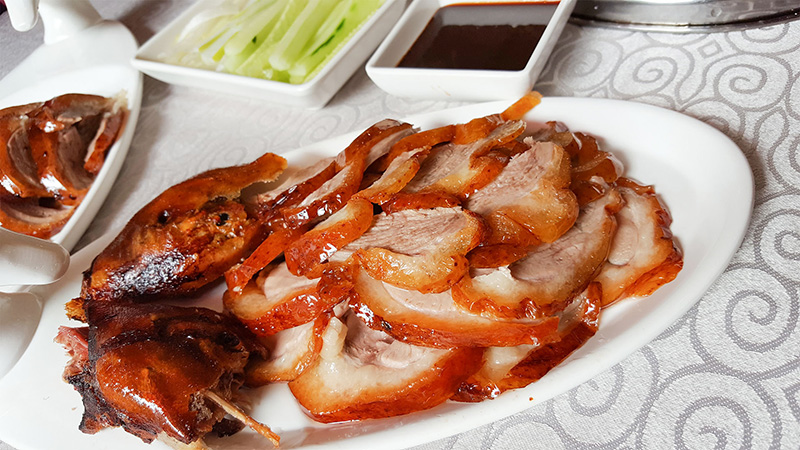Drinks and Snacks of China - Chinese Cuisine(zhongcan)
China is truly a gastronomic paradise. There are many unique aspects of Chinese cuisine that make it a haven for food lovers. Every location, minority group, or standing on the social ladder features its own unique dishes. Many different countries have"Chinese Restaurants", but there is nothing authentic about their dishes. They have always been modified due to local tastes, and ingredient availability. Authentic Chinese cuisine is made with the freshest ingredients and cooked to order, never pre-made.
Every area of China has its own local cuisine. Even cities two hours apart have their own unique dishes. Every destination that visitors travel to has new and completely different local cuisines to choose from, which makes China a food lover's heaven.
Chinese cuisine generally falls into one of six schools:
Imperial Dishes
These dishes were originally only intended for exclusive consumption by the Emperor, Empress, and anyone lucky enough to have found favor with them. Each dish was made of the finest ingredients and presented in a way that made each one a work of art. The names of these different dishes were as beautiful as the food itself. Some species of fruits, vegetables, and rice were for the exclusive use of the Emperor, and anyone caught eating these foods, would be executed. Ingredients were brought to the palace in the form of tribute from within China, and abroad.
 Beijing Roast Duck
Beijing Roast Duck
One of the most famous, but rarely seen imperial meals is the Man-Han (Manchurian, Chinese) banquet. It is composed of 108 dishes and is a mixture of the best dishes of the Manchurian and Chinese people. Today these exclusive dishes are available to the general public. In Beijing's Beihai Park, there is a restaurant founded by the last imperial chefs of the Qing Dynasty. Some of these Imperial dishes have even made their way to other countries. Peking (Beijing) Roast Duck was once one of the exclusive dishes of the Emperor that can now be enjoyed by everyone.
Mansion Kitchen Dishes
Government officials and the wealthy thought of food, not only as a sustainer of life, but also as a status symbol and spared no expense in finding the best ingredients, and the best chefs. The better the cooks they could employ, the more prestigious these elite were considered. They went out of their way to hire famous chefs and could afford to do so. These chefs became extremely wealthy, and many of their dishes found their way to the general public. Two schools of Mansion Kitchen cuisine are the Confucian, and Tan family schools. These two schools have survived until today and can be found in Beijing. The Confucian Restaurant in Beijing's Liulichang and the Tan Family Kitchen in the Beijing Hotel serve as excellent examples of this ancient style of cooking.
Local Cuisine
Local Cuisine is the food eaten by the common man. In China, there are four main schools of Local Cuisine. They are the Shandong, Sichuan, Yangzhou, and Canton (Guangzhou) schools. Each school of cooking is unique and features aspects unique to their respective locations.
The Shandong School of cuisine is known for its emphasis on aroma, freshness, crispness, and tenderness. Sichuan (Szechuan) Cuisine is famous for its spicy and strong-flavored foods. The Hangzhou School of Chinese cuisine has a reputation for tenderness, softness, and mellow flavor. Canton (Guangzhou) Cuisine is known for its seafood dishes and dim sum.
 Sichuan Hotpot
Sichuan Hotpot
Ethnic Dishes
Chinese Ethnic dishes were first created by China's 56 ethnic minority groups. They were traditionally made from simple ingredients native to their respective regions. Now, many of these dishes have crossed borders, and been refined. They can now be enjoyed in many restaurants throughout China. Mongolian Hot pot and Xinjiang's mutton shish-kebob are just two examples.
Monastic Dishes
Otherwise known as vegetarian dishes, monastic dishes were created in Buddhist temples due to the fact that Buddhist monks are unable to eat meat. This style of cooking has recently become more popular in the secular world due to its health benefits. Many of these monastic dishes take on the shape, texture, and flavor of meat, but contain no meat products. They are extremely delicious, and a healthy alternative to dining.
Therapeutic Dishes
Therapeutic or medicinal dishes have been eaten in China for thousands of years. Not only is it delicious cuisine, but also features the curative effects of China's Traditional Medicine. They are comprised of many herbs and vegetables that are known to have medicinal qualities. Another form of Therapeutic dish is medicinal teas. A traditional Chinese Medicine Doctor will prescribe his patient a list of herbs, and the patient will brew them into a tea. Although not always delicious, this form of therapeutic tea has been helping Chinese people for thousands of years.
Recommended China tour: 8-day China’s Golden Triangle Tour
Contact us for a tailor-made China tour.
What Our Clients Say
"Great Customized Service", "Trip of A Lifetime", "Exceed All Expectations"







